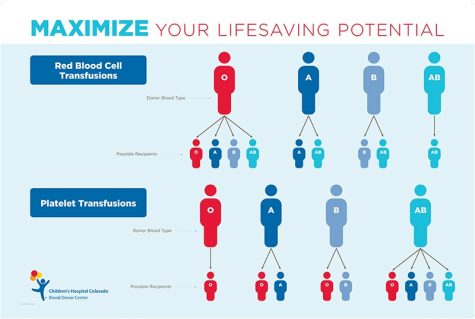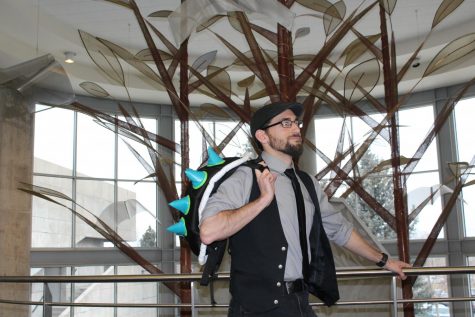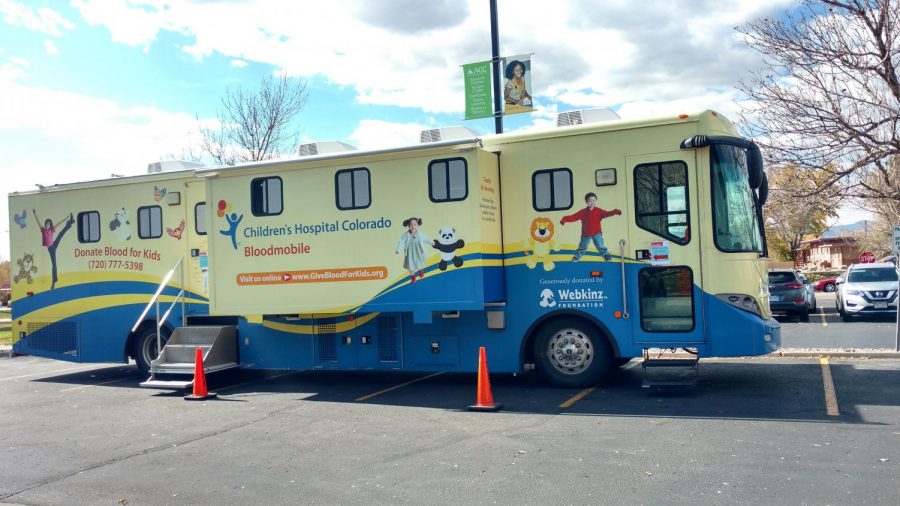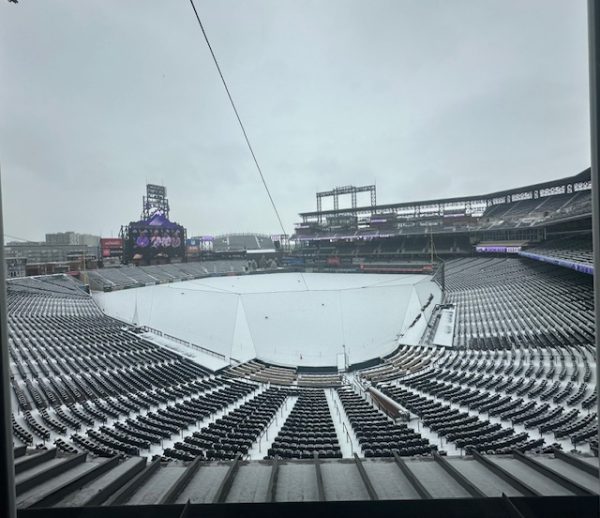The Vampires of Children’s Hospital
Image via Dylan Boxer
The Children’s Hospital Mobile Unit ready to leave after a day of donations
With the cold nights getting longer and the leaves changing with the season one thing seems to be on most people’s minds: Halloween. And just like mythical vampires of legend, the kind folks at Children’s Hospital decided to set out and retrieve some blood.
Though not actual vampires, the medical staff behind the mobile blood donation station visited Arapahoe Community College and got a lot of blood. They were set up in Lot E on Thursday Oct 25 from 8:30am-12:30pm. Those who were brave and kind enough to donate whole blood were rewarded with a sense of satisfaction, and of course, snacks.
According to the Children’s Hospital website, they explain that their mobile units are equipped to draw two donors every 15 minutes, for a maximum of 32 donors. They go on to say:
“We also have the ability to bring our equipment inside your location for a blood drive. Our minimum goal is to get 28 donors per blood drive. All blood is collected in a safe and sterile manner to protect the donor and the patient. A typical whole blood donation is 450ml which is approximately 1 pint. The total process from arrival, paperwork, a brief interview to the actual blood draw takes between 30-45 minutes”
If you are someone who is squeamish, don’t worry. The actual bleeding part of the donation only takes about 5-10 minutes.
For those that don’t know much about blood and donations, here’s a brief breakdown of what happens in your veins. We all have a genetically determined blood type. The blood types consist O, A, B, and AB. Each of these can be positive (+) or negative (-).

Based on what you are born with determines what blood you can receive in the event of a trauma, and whether you’re ‘high priority,’ or someone with a relatively rare blood type that is frequently running low in the blood stores.
As far as the blood itself, the thick red fluid primarily consists of red cells, platelets and plasma.
Red cells main objective is to carry oxygen across the blood stream.

A representation of Red cells carrying oxygen across the blood stream
Platelets band together to clot your blood and stop open wounds from bleeding, and plasma is used to transport hormones, nutrients and proteins to other parts of the body.

A representation of Platelets joining together.
All three of these elements that make up blood and each, along with the whole blood itself, are in high demand. According to givingblood.org, only 37% of people in the US are eligible to donate blood, and less than 10% do annually.
About 1 in 7 people who enter the hospital are in need of blood and one pint donated can save up to 3 lives.
For those who fall into the eligibility and would like to have the privilege of saving a life; donations of blood, plasma, red cells and palettes can be made by appointment at Children’s Hospital

A veteran to the Arapahoe Pinnacle, editor Dylan Boxer is known for his quick wit and lightheartedness within the publication. When his not writing you can usually find him outside on his long-board or inside working on his next cosplay....












